Sitting in an old military hut, Jamie's unexploded ordnance (UXO) briefing has my anxiety level rising. I am about to traverse a savaged land, a former bombing range still littered with live explosives. The region has been "cleared" with an 85 per cent probability that 90 per cent of the bombs have been removed. Not exactly cleared by my reckoning.
This is not Afghanistan. It is Kaho'olawe, Hawaii: an island unknown to the millions of surf-seeking tourists, forbidden to casual inquirers of Maui's southern cousin, yet treasured by the few who have contributed to its restoration. It's an island that has been ravaged by invasive species, ranchers and the military.
The cost of rewilding, or the art of returning land to a bioproductive state -- not explicit restoration -- has a price tag that exceeds $400 million. This is modernity's Rapa Nui (Easter Island) and the recovery costs are staggering.
The cost of indiscriminate land use in the area is now burdened upon future generations. Perhaps Canadian public policy-makers, currently busy dismantling environmental protection laws, should take a moment to consider the lessons of Kaho'olawe.
The voyage
Without compass or sextant, early Tahitians navigated the Pacific Ocean with precision. Polynesian oral traditions feature wayfarers who could literally conjure an island out of the ocean. In reality, they could read the intangibly complex map etched by the diffraction pattern of waves reflected from distant islands, conjoined with the inexorable swell in the ocean's surface. It is these skills that allowed the first settlers and their domesticated pigs in the 4th century to colonize and inadvertently start the island's transformation.
My far less ambitious voyage started with an invitation from the Kaho'olawe Island Reserve Commission (KIRC) and a short trip by landing craft from Maui. KIRC is responsible for the biological restoration of the island. Earnestly working the foredeck is a teenage Hawaiian and member of the Protect Kaho'olawe 'Ohana (PKO) organization. He is the whale lookout, and with great pride assures me that "no whale will be accidentally harmed."
As we near the land, people can be seen gathering by a modern mua known as Kahualele, a rock plinth of cultural significance. Suddenly a deep resonant tenor fills the air as fellow traveler Blake La Benz's (affectionately known as Brutus) immense voice booms across the water. As he recites the Mele Komo (a chant known as an 'Oli), the boats rivets literally rattle.
He haki nu'anu'a nei kai
'o'awa ana I uka
Pehea a hiki aku ai
'O ka leo
Mai pa'a I ka leo
As his reverberations die, an echoing chant is discerned above the crashing surf from the group on shore. This is the protocol of permission request and grant honoured that is executed before the ocean deity Kanaloa. As it concludes, Brutus launches into the water, swimming to shore, his belongings secured and floating before him in a dry bag. Brutus is also a member of the PKO, the organization responsible for the cultural restoration of ancient Hawaiian practices and the oral history of Kaho'olawe.
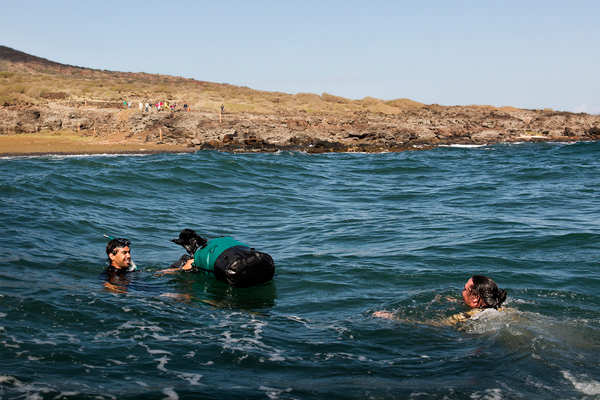
The island defies belief. Sequestered by the U.S. military after Pearl Harbour for use as a bombing range for nearly 50 years, over 3,000 archeological and culturally significant sites remain -- poignantly an ancient petroglyph carved into the rock is now juxtaposed with the fractal scar of a bullet impact. Cultural restoration is respected as a contemporary companion of biological restoration.
Our destination is another 40 minutes away on the southwestern Hanakanai'a region of Kaho'olawe. Here the old military base now serves as the operations centre for KIRC's restoration program. Competing with the drone of the boat's motor, Paul Higashino (restoration program manager) and Jamie Bruch (restoration specialist) are eager to explain how the onslaught of modernity had stripped the island bare and left it almost barren.
In 1793, Captain Vancouver presented Maui's Chief Kahekili with goats, a gift of friendship. The goats were sent to the island with a Kapu (a sacred code of conduct) to flourish. But by the Second World War tens of thousands of feral goats were stripping the island's vegetation bare. Commercial ranching also hastened the impact by introducing drought-resistant African grasses and other exotics that pressured the endemic species. Between the goats and the bombing it is estimated that over 12 feet of the island's once rich red ochre topsoil has been lost to the wind and seasonal creeks that run blood red into the ocean. Twenty years ago when restoration was first proposed, over 50 per cent of the island was barren hardpan.
'A gardener's nightmare'
Approaching the land for a second time, my interest in the history was somewhat drowned by my personal anxiety of swimming ashore with 30 pounds of camera gear. Greeted by Spinner dolphins, a good omen, the lee shore allowed the landing craft to reach the white sand beach with ease. Stepping ashore, Brutus's 'Oli still rang in my ears.
Interrupting Jamie's uxo briefing, Paul urges us to get moving. We have a 4 p.m. rendezvous with a helicopter at the island's summit region, and it's already 11 a.m. Sensing my anxiety, Paul chuckles. "Don't worry, just walk where we walk." As we exit the hut I catch a hint of a satisfied grin between them -- another mainlander suitably rattled. I grin, recognizing a rite of passage.
The island's summit is no more than 10 miles away, but the rudimentary roads, broken, potholed and rutted, do not allow for fast driving. We crawl across the island in a battered truck that has 30,000 miles on the clock and has most likely never been out of first gear. Along the route we stop at several cultural sites, but conversation is focused on the restoration of the island's flora, its biotic clothing.
The summit's barren hardpan is a gardener's nightmare: there is no soil. Breaking the surface with a pickaxe can be done, but it is tantamount to suicide, for the probability of hitting an unexploded bomb is tangibly finite. The ground is still too tough for roots to penetrate and plants to thrive. Several techniques have been tried and failed to establish plant life; hydro mulching, an early candidate, failed, for the arid conditions simply turned the topical application to dust long before the seed had a chance to take hold.
Unthwarted by early failures, KIRC biologists innovated and perfected techniques that have succeeded. In the last decade the barren hardpan has been reduced from 50 per cent to less than 18 per cent of the surface area. The key is to understand that soil is built by decaying plants. Today fortresses of pili grass bales grown on Moloka'i at the Natural Resources Conservation Service facility are formed on Kaho'olawe, and seed balls of compact soil are placed within the walls.
As time passes the bales trap moisture and windblown soil, the essential ingredients of sustained growth. Importantly, behind the bales, drifts of soil and seeds accumulate, yet to be dispersed. Paul launches a few handfuls of seeds into the wind, smiling as he explains that the wind will carry them to nooks and crannies beyond the UXO-cleared areas and with luck they, too, may help re-colonize the island's surface.
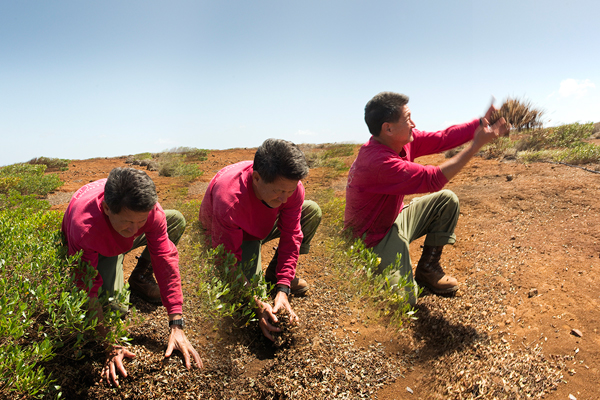
Later from vantage of the helicopter, the strategy is more clearly revealed. Parallel rows of pili grass fortresses appear across the landscape. Now, just a few years later, the barren space between them is surrendering to the conquering plants.
Rewilding the island
There is scant recorded history of the island's biodiversity. Captain Vancouver's naturalist failed to record or even mention the island, and no modern inventory was taken before the island was sequestered by the military. This is an important nuance, for the biotic restoration of Kaho'olawe is envisioned to be one of a bio-productive island that embraces both invasive and endemic plants, rather than perfect remediation.
I suggest that "rewilding" the island is perhaps more accurate than restoration, and Paul nods enthusiastically. He clarifies that the exotic and the invasive would ideally be replaced by native Hawaiian species from adjacent islands, though that would be difficult to achieve without killing all flora on the island, for areas that have not been cleared of armaments and cannot be remediated act as seed banks for the invasive species.
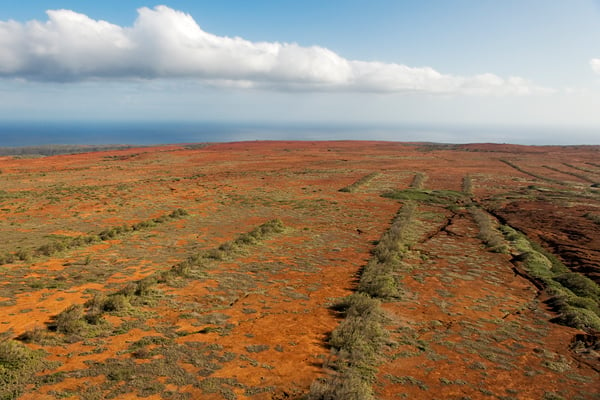
As we drive by the run-off water reserve constructed by KIRC and the volunteer-built irrigation system that nurtures the most arid area of the island, I am speechless at the sheer scale of these endeavours, and the costs. The work can be measured in thousands of person-years and over $400 million spent clearing the island of bombs and detritus. Yet it's just the beginning.
The next restorative phase is to remove the feral cats and ship rats that have exterminated the island's seabirds and impacted native plants by preferentially foraging on their seeds. A blessed exception is the Pu'ukoa'e sea stack, a towering rocky islet on the southern rugged coast that is sufficiently isolated by surf and tide, so that it still supports a breeding population of oceanic wanderers. A biological refuge can be used to repopulate cliffs once vibrant with raucous bird colonies.
Eliminating the feral predatory species is the domain expertise of Island Conservation -- a group credited with restoring many infested islands around the globe and rescuing bird populations from the cusp of extinction. This is an exciting step. It's not beyond the realm of possibility that in my children’s lifetime the island's rugged cliffs could once again teem with red-tailed tropic birds, Bulwer, Hawaiian shearwaters and band-rumped storm petrels.
The gift of Kaho'olawe's restoration promises to reach far beyond the island's shores, for the far northwest of Hawaii is a 1,000 nautical mile archipelago replete with coral reef atolls that barely rise above the ocean's surface. These isolated islets are home to a unique range of seals, birds and turtles. But climate change and rising ocean levels threatens these habitats; indeed, Whale Skate Island has already succumbed, lost beneath the waves. It is exciting to consider that these unique species could be translocated, flora included. Kaho'olawe offers the opportunity to create a living biological ark -- a refuge of biodiversity and a tribute to Kanaloa.
Summit
At the island summit a rain ahu commands a horizon view, a modern altar jointly built by the PKO and KIRC where an ancient one once stood. Maui's volcanic Haleakala peak looks down upon the shrine, and offerings for the blessing of precipitation from a recent ceremony still remain.
Jamie assures me that the offerings will ensure a cloud bridge from Maui will form before the day is done. With hardly a cloud in the sky, I am skeptical, but he simply says, "it will."
The radio cackles, relaying a message that the helicopter is going to be late. Seizing the opportunity we head for the island's central summit, Moa'ulaiki. In the truck Jamie explains cultural protocol requests that a respectful silence is maintained when climbing. A few steps into our climb, enthralled by the location, I start to express a thought; Jamie's silence quickly reprimands me. Feeling like a chump I fall in step behind him and we climb in silent reverence.
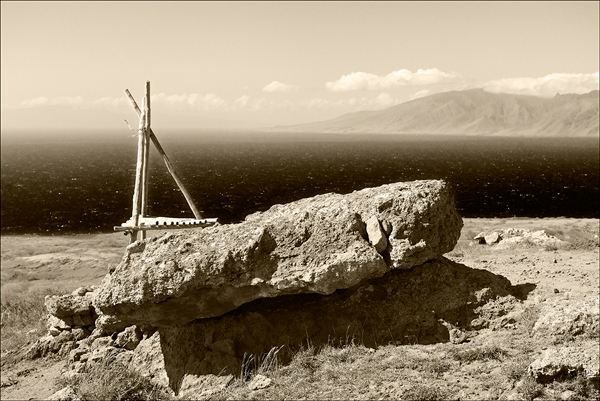
This ancient site is marked by a bell rock, split so that when struck during cultural ceremonies it rings with a prolonged resonance. The shrine has an almost perfect 360 degree view of the horizon, and it is where Polynesian astral navigation was and still is taught. To stand here under the canopy of the Milky Way and be transported to an ancient time when humans were free of modernity would be enthralling.
The diminutive helicopter touches down, and with dust flying we dash, spines hunched, under the blades and strap into the minuscule capsule. Don, our all-action hero pilot, declares he is up for anything. Two adrenaline-filled hours followed, our aircraft sweeping across the barren island at various altitudes, with dramatic banked turns leaving just the ether between me and terra firma.
From the giant football field sized crater where 500 tons of TNT was detonated to simulate a nuclear blast (Google "YouTube Sailors Hat Hawaii") to the desolate summit region, one enduring aspect of the perspective does not change: this landscape has been savaged. Thankfully, signs of recovery are present, the plants taking hold. The current 18 per cent bare coverage still looks pretty barren, and one can only imagine what 50 per cent coverage looked like a decade ago.
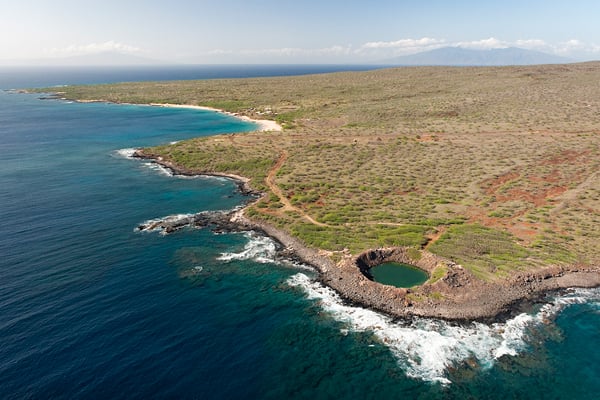
Don swings the helicopter across the island with a dramatic low pass of the bell rock summit. As we clear the rain shrine he spins the helicopter and presents a full aerial view of Maui. Behold: the cloud bridge, as promised, has formed and it is bringing rain.
Flying over Maui's Lana coast, Paul picks up the conservation narrative again. In 30 short minutes we pass over multiple ecosystems, traversing arid, alpine and tropical. The land is marked by his early conservation career endeavors. We see two protected areas, fenced to eliminate feral goats, axis deer and pigs. Within the fence, native Hawaiian trees and plants thrive in a dense equilibrium; beyond these refuges the vegetation is thin. In places, huge dirt patches the size of school yards can be observed where feral ungulates (axis deer, goats and European boars) have attacked the land. This is how fertile topsoil is initially lost, a present-day snapshot of Kaho'olawe's past.
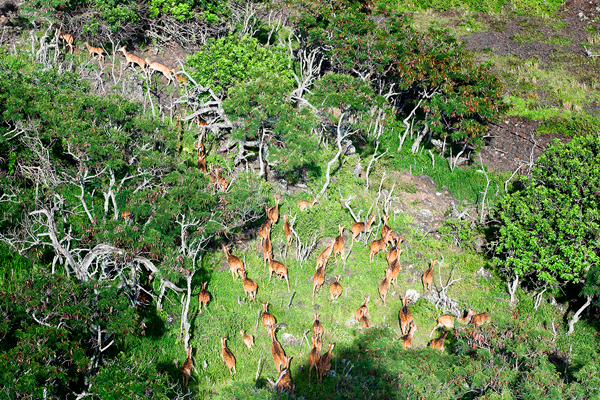
Heading towards the Hana coast, our trip nearing its end, we fly over a ridge that delineates the preserved Kipahulu valley from the valley of feral beasts, Waihoi -- the difference, although not yet dramatic, can be clearly seen, another vignette of pre-western, post-Polynesian Kaho'olawe. With 20 minutes of fuel left Don pulls one last stunt and literally drops the helicopter over a waterfall in a slow motion descent; a surreal combination of breathtaking natural beauty and heart stopping aerial acrobatics. Thirty minutes later, I find myself alone on Maui with a cool drink.
Kaho'olawe is a stark reminder of how careless land use can create immense costs for future generations. Currently Canada has a record number of abandoned toxic industrial wastelands requiring restoration, yet clean up campaigns are deemed too expensive by the government. Meanwhile, Canadian policy-makers dismantle our environmental assessment apparatus and allow unchecked expansion of Alberta's oil production.
Ancient Polynesians navigated phenomenal distances and conjured islands from the ocean. Yet our culture cannot navigate beyond the reef of short-term riches to chart a course that secures long-term economic and environmental well-being. Canada would do well to reflect on the lessons of Kaho'olawe. ![]()
Read more: Environment


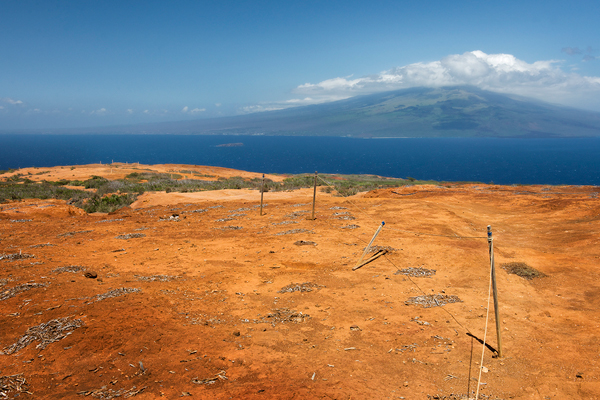












Tyee Commenting Guidelines
Comments that violate guidelines risk being deleted, and violations may result in a temporary or permanent user ban. Maintain the spirit of good conversation to stay in the discussion.
*Please note The Tyee is not a forum for spreading misinformation about COVID-19, denying its existence or minimizing its risk to public health.
Do:
Do not: